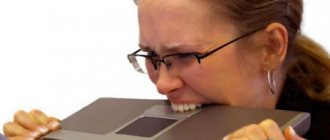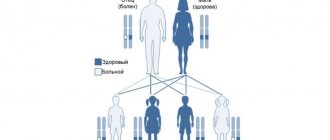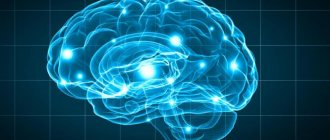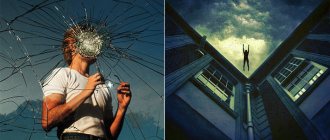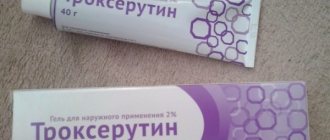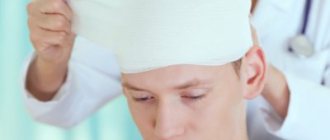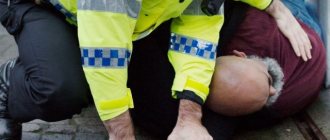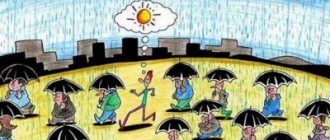Headache is both one of the signs of an illness and an individual disease.
Often you can cope with this problem on your own, with the help of a painkiller, or you can wait until the pain goes away on its own after a while, and there is no need for hospitalization. Today, this is the most common complaint with which patients consult a doctor. Headaches can be caused by many factors, and the first step is to determine the root cause. Although this is not always easy, because there are a lot of options: lack of sleep, sedentary lifestyle, nicotine abuse, osteochondrosis, stress, or perhaps she has suffered a serious injury. But, of course, only a specialist can establish the correct diagnosis. Fortunately, it is not often that a headache is a consequence of another more serious illness.
How does a headache manifest itself? Cephalgia appears due to tension in pain receptors, which are located in various parts of the head and neck, after a head injury, nerves, and enlarged blood vessels.
Types of headaches
There are two types of headache: primary and secondary.
- Primary headache is an individual disease, and out of 10 cases it can be encountered in 9.
- Secondary headache is a sign of another illness. It can be the result of fifty diseases.
Primary headache
- Inflammation, compression or irritation of the trigeminal nerve. A very common disease, especially among women over 40. Attacks last for about a couple of seconds. The disease is characterized by stabbing pain in the head, as well as in the crown area, sometimes spreading to the face and even the jaw.
- Cluster headache. Shooting strong painful sensations, mostly noticeable only on one side. The face swells and turns red, and the eyes water.
- Tension headaches mainly affect the entire skull as a whole, in some cases they are separately transferred to the areas of the back of the head, forehead, and crown. With this disease, the headache is moderate. It’s not uncommon to hear from a patient: “It gets worse when I shake it, but there are no strong unbearable attacks, the illness can last for a week of daily pain.” And basically, it is the result of severe emotional shock, or excessive physical exertion.
- Migraine. Women are more prone to migraines than men. Very often, attacks begin after sleep. The degree of pain ranges from moderate to unbearable, it hurts even when you touch it. It can last from several hours to 3 days.
Secondary headache
The most common:
- Cold or flu. The attacks are not too severe in the area of the eyes, temples and forehead. In addition to headaches, other cold symptoms also appear. When the temperature drops, the headache stops.
- Increased intracranial pressure. The headaches last a long time, but are not severe. It is not uncommon to be combined with nausea and vomiting in the morning, especially when you jerk it sharply.
- Consequence of head injury. Continuous, pinching and dull pain occurs no later than 2 weeks after the injury. Interestingly, the severity of the pain does not correspond to the trauma suffered. If the injury is mild, the attacks can be severe and vice versa.
- Cervical osteochondrosis. If your head hurts when you move your head suddenly, after sleeping in an uncomfortable position, when your neck is tense for a long time, or when you shake it. It is felt more strongly in the morning and may be accompanied by hearing problems.
- Meningitis. Nausea, fever, vomiting, and the muscles of the back of the head are tense, the headache is unbearable. And the general health itself is getting worse and worse every minute. In such cases, you need to call an ambulance as soon as possible.
- Concussion. Another reason that may cause this symptom. The pain sometimes continues many years after the injury, and the person may feel anxious, dizzy, angry, and unfocused. Patients complain: “I feel bad when I suddenly get out of bed, throw my head back, or shake it. I think stress and nervous shock should be avoided.”
- Acute stroke. The patient may suddenly feel a severe headache.
- Vegetative-vascular dystonia, this disease occurs due to changes in weather, or stress. Plus is accompanied by nausea, dizziness and fluctuations in blood pressure.
- Eye diseases. Unpleasant painful sensations inside and behind the eye can be accompanied by glaucoma and strabismus. The pain itself is dull. It feels like there is pain inside the eye.
- “Horton's” headache, which affects men more often, is characterized by a severe and boring headache that spreads around the eye area and moves to the temple and forehead. It becomes very bad when you move your head suddenly or when you twist it.
- Sinusitis, sinusitis, sinusitis. Long-lasting, pressing headache in the forehead, eyes and cheeks. Symptoms such as runny nose and low fever are also observed.
Children under one year old
Babies most often roll onto the floor from changing tables, so you need to swaddle your baby not on the table, but, for example, on the sofa. He's shorter. Also, to cushion a possible fall, place a rug under a table or next to a sofa. Three more simple recommendations:
- do not take your eyes off the baby for a second while swaddling;
- try to hold it with your hand;
- If you need to go away (to get a bottle, or pick up the phone, or open the door), take the baby with you. Otherwise, he can turn over from his back to his stomach at any moment (it’s better not to think about the consequences of such an acrobatic sketch).
You have to keep an eye on your baby even when he is lying peacefully in his crib. However, lying down is half the battle. As soon as he starts to sit down, keep your eyes open. If your fidget has already mastered the art of sitting, urgently buy a low, stroller. And definitely one in which the child can sit and lie. It is more difficult for him to get out of such a stroller, and it is safer to fall.
When to rush to the hospital
- If your head suddenly and unexpectedly hurts. You should immediately call an ambulance, as this may be a consequence of subarachnoid hemorrhage.
- The headache is worse when lying down, and goes away about half an hour after getting out of bed. This may be a symptom of impaired outflow of cerebrospinal fluid, as well as increased intracranial pressure, tumors.
- In case of loss of consciousness.
- In addition to headaches, symptoms such as fear of light, fever and discomfort in the neck muscles also appear. These may be symptoms of meningitis.
Pulsation in the head: causes, symptoms, treatment
One of the most common complaints that patients of any age turn to doctors with is pulsation in the head. This noise and sensation of blood flow, a knocking synchronous with the pulse, arise for various reasons.
Ripple may occasionally appear after stress, hypothermia or increased physical activity. Or it can occur frequently and be a symptom of serious disorders in the functioning of blood vessels and other organs. It can be simply an unpleasant sensation or throbbing pain.
But in any case, it is advisable to consult a doctor if this happens often.
What is pulsation in the head?
This symptom can appear in completely healthy young people. The sensation of blood flowing through the vessels occurs due to mental overstrain, accumulated fatigue or stress.
The pulsation can be weak or strong, accompanied by pain or tinnitus. The pulsation is often localized in the back of the head. In this case, it is associated with vascular dysfunction.
The sensation of a pulse may also occur in the frontal, temporal or parietal region.
Why does this feeling happen?
In a healthy person, when exposed to certain factors, tinnitus and pulsation may suddenly occur. The head may feel light or, conversely, feel unusually heavy.
This most often happens with sudden fear, stress or severe physical strain. This condition causes the heart rate to increase and the arteries to narrow at the same time.
Therefore, blood, pushing under pressure through the vessels, causes them to pulsate.
Such headaches can occur as a reaction to changing weather conditions, hormonal fluctuations in women, due to a sedentary lifestyle, or due to weakened immunity after serious illnesses.
Hypothermia or even excessive consumption of cold foods can also cause throbbing in the head.
Often this feeling occurs as a result of severe overwork, accumulated fatigue or emotional overstrain.
What diseases cause throbbing pain?
In many cases, the frequent occurrence of such a sensation indicates the development of serious health problems. Very often, various vascular diseases do not show any other signs other than the fact that the patient’s head is pulsating.
Other diseases may be accompanied by various symptoms, one of which will be pulsation. When such a feeling occurs, it is imperative to be examined by a doctor in order to diagnose serious illnesses in a timely manner.
What diseases cause pulsation and pain:
- aneurysm;
- atherosclerosis;
- hypertension;
- kidney disease;
- cervical osteochondrosis;
- glaucoma;
- brain tumors;
- vegetative-vascular dystonia;
- migraine;
- sinusitis;
- pulpitis;
- trigeminal neuralgia.
Vascular aneurysm is the most common cause of pulsation
Very often, the cause of sudden death of a person is precisely this disease. An aneurysm is a thinning of the wall of a cerebral artery and the formation of a protrusion that disrupts the normal flow of blood.
This condition can continue asymptomatically for many years. Occasionally headaches occur, and in half of the cases there is pulsation in the head.
An aneurysm can suddenly rupture, and such brain hemorrhage always leads to death.
Treatment of this disease consists only of relieving unpleasant sensations, since in many countries it is not even considered a disease, referring to the manifestation of other pathologies. This condition is also called neurocirculatory dysfunction.
Quite often, when teenage girls complain of shortness of breath, weakness, dizziness, decreased performance and throbbing pain, doctors diagnose “vegetative-vascular dystonia.” Symptoms in adults, treatment and prevention of attacks of this disease usually do not change with age. But the disease occurs mainly in women under 30 years of age.
The problems that arise in this case are associated with impaired vascular tone. This is what causes the sensation of pulsation in the back of the head or temples.
Vascular dysfunction causing pulsation
The feeling of a pulse in the head most often occurs if something interferes with the normal passage of blood through the vessels. At the initial stage, this condition may not be accompanied by pain. Some patients go to the doctor complaining that they have a throbbing sensation in their head. After examination, one of the diseases causing this sensation is discovered.
- Vascular atherosclerosis is characterized by the formation of cholesterol plaques on the walls of the arteries. They disrupt the normal flow of blood, creating turbulence, which causes a pulsating noise.
- Hypertension, or high blood pressure, causes blood vessels to narrow. The higher it is, the stronger the pulsation in the head can be felt when getting out of bed or during any physical activity.
- A tumor in the brain can put pressure on a blood vessel, causing it to narrow. This causes pulsation in the head, especially noticeable in the morning.
Diseases of other organs
- Some kidney diseases associated with impaired urine flow lead to an increase in the volume of circulating blood. This also negatively affects the cerebral arteries, causing noise with every heartbeat.
- Cervical osteochondrosis often causes pulsation in the back of the head.
After all, it leads to narrowing of the vertebral artery. The blood flow, entering the brain vessels under pressure, causes such noise. - Glaucoma is accompanied by a strong increase in intraocular pressure. This leads to the appearance of pulsation in the temporal and frontal parts of the head.
- Sinusitis, frontal sinusitis and even ordinary sinusitis often cause a feeling of distension and pulsation of blood in the forehead.
Diagnosis of the causes of pulsation
It is very important to see a doctor if these symptoms appear. After all, pulsation in the head can be a sign of serious diseases, for example, aneurysm, atherosclerosis or hypertension. Therefore, timely diagnosis will help avoid complications.
When contacting a doctor, it is important to talk in more detail about your sensations: when and how often the pulsation occurs, where it is localized, what factors provoke it, whether there is pain.
Typically, after collecting this information, the doctor prescribes the following diagnostic procedures:
- blood and urine tests;
- MRI or ultrasound of the brain;
- electroencephalogram;
- angiography;
- X-ray of the cervical spine.
A consultation with a neurologist, ophthalmologist, cardiologist, otolaryngologist, and neurosurgeon will also be necessary.
Features of the treatment of this condition
If after the examination no serious abnormalities in the condition of the blood vessels are revealed, to get rid of the pulsation in the head you need to change your lifestyle.
Regular light physical activity, proper nutrition, taking vitamins and lack of stress will easily help you cope with unpleasant sensations.
And to relax and relieve emotional stress, you can use breathing exercises, do auto-training or yoga.
If a vascular dysfunction is detected, first of all, it is necessary to treat the underlying disease.
In addition, physical therapy, massage, physiotherapeutic procedures, hirudotherapy and sanatorium-resort treatment will help normalize the condition.
It is not recommended to take any medications on your own, as this can cause further harm to yourself. Only in case of severe pain can you take an Aspirin, Paracetomol or Ibuprofen tablet.
Traditional methods of treatment
As a supplement to the main treatment, various folk recipes can be used. But this can only be done after consulting a doctor. What best helps to cope with pulsation in the head:
- tea made from fresh crushed ginger root with honey and lemon normalizes blood circulation well;
- if there are no stomach problems, you can eat a tablespoon of chopped horseradish root mixed with sour cream three times a day;
- strawberry flower tea relieves cerebral vascular spasms;
- drink a glass of mulberry shoot decoction 3 times a day;
- make a tincture of garlic in vodka and take it, adding a few drops to milk;
- Dandelion flower syrup normalizes the condition of blood vessels;
- You can also drink decoctions of valerian root, hawthorn berries, chamomile flowers, motherwort, and mint.
Source: https://FB.ru/article/269486/pulsatsiya-v-golove-prichinyi-simptomyi-lechenie
Prevention
In order to reduce attacks, or reduce the likelihood of their occurrence, prevention should be carried out, take care of the head and help it, namely
- Walk outdoors more often.
- Eat properly.
- Lead a healthy lifestyle.
- Drink plenty of fluids, about 2 liters per day.
- Sleep at least 7 hours a day.
- Don't be nervous, try not to give in to stress.
- Play sports: swimming, running and yoga.
Baby went
Special socks with “brakes” (these are rubberized inserts in the sole of the sock that reduce slipping) can protect your child from falling in the apartment. They are especially useful in an apartment with parquet floors. Place rugs in places where your baby usually travels (but so that they lie tightly and do not slide on the floor). For the first time, wrap some thick material around the sharp corners of furniture and door jambs. Remove chairs and other furniture from the windows - this will keep an inquisitive little person from wanting to climb onto the windowsill or, scary to think, open the window.
Diagnostics
There are many methods available that can help find the cause of the pain.
But only a specialist can determine it after carrying out all the necessary examinations and tests. You should not self-medicate, as this may have negative consequences, or delay a visit to the doctor. The sooner the cause of the disease is determined, the sooner treatment can begin and help it. Diagnostic methods:
- Magnetic resonance imaging of the brain and spine. This method helps to see the structures of the brain as well as the spinal cord. This makes it possible to recognize many causes of pain: tumors, sinusitis, lesions after a stroke and much more.
- CT scan. In this case, the diagnostic range is smaller than in magnetic resonance imaging of the brain and spine. Since the examination is carried out only in the skull area, the physician will be able to diagnose acute and chronic cerebrovascular accidents, injuries, and signs of hydrocephalus.
- Laboratory tests can be used to find infections and inflammations.
- Blood pressure monitoring – using this method, you can recognize hidden arterial hypertension and calculate changes in pressure during the day.
- Magnetic resonance angiography is the latest technique; it can be used to identify intracraninal and extracraninal arteries and veins and identify their stenotic fluctuations.
- General examination by doctors. Sometimes, in order to recognize the source of the disease, a comprehensive examination is needed: by an ophthalmologist, an otolaryngologist, or a dentist. For example, only an ophthalmologist, using special equipment, can see changes in the fundus of the eye, which help diagnose the disease.
In any case, it is very important to be more attentive to yourself and your health! If there is cause for concern, you should immediately contact a doctor.
Classification of pathological condition
A person can hit his head against a wall, put his forehead against the glass on a bus, or get hit with a bat or a stone. A significant number of traumatic brain injuries are recorded among motorists involved in accidents.
A blow with a fist to the eye, to the scalp, to the temple, to the neck also leads to injury. Even an infant can receive a traumatic blow to the head when passing through the birth canal.
Possible consequences of impacts:
- Hematoma on the face, scalp, scalp.
- A lump that looks like a skin bump, without a bruise.
- Bleeding from the nose, ears.
- Damage to the skin, abrasion.
- Significant damage to soft tissues, rupture of skin and muscles.
- Facial bone fracture.
- Intracerebral hemorrhage.
- Brain concussion.
- Fracture of the skull bones.
- Fracture of the base of the skull.
If the patient constantly hears or feels extraneous sounds, the causes of noise can be quite serious.
In medicine, there are several types of pathology:
- Subjective.
- Objective.
The last category is noise in the ears and head, which can be recognized by the attending physician using the appropriate technique to diagnose the disease. It is impossible to determine subjective sounds from the outside, since they are felt only by the patient. Doctors gave this phenomenon a name such as “tinnitus,” which means ringing.
Yoko Geri: types of strikes and performance features
Another spectacular martial arts strike. Yoko Geri is a side kick. Its distinctive feature is its ease of execution, making it one of the most commonly used techniques in martial arts. If an athlete performs this kick through a jump, then the force of its action will increase significantly. With this embodiment of the technique, the fighter will receive a powerful striking blow that will knock out his opponent in a matter of seconds.
To implement Yoko Geri, it is important for an athlete to be physically well prepared, namely:
- have perfect stretch in the groin and knees;
- be able to do cross splits;
- have developed leg muscles.
The blow can be made with either a bare foot or a shod one. It all depends on the sport in which he practices. At the same time, we should not forget that if the foot is in shoes, then there is a possible risk of causing additional cuts to the opponent.
In the gym, the training process is carried out according to the following scheme:
- Stretching. Leg swings are practiced, stretching is done from standing and sitting positions.
- Working in front of a mirror. The athlete tries to make a blow an amount equal to his own height.
- Balancing. The fighter moves his leg to the side and strives to maintain balance in this position for as long as possible.
- Punch practice. The athlete, standing on one leg, makes pushing movements. At the same time, the proper position of the foot is formed.
In a duel, this blow is used for different purposes:
- reducing the distance;
- creating a gap in enemy defenses;
- conquering more ring space;
- interception of initiative;
- as a defensive action;
- often used in combination with other types of strikes.
The yoko geri strike has two varieties: keage and kekomi.
Yoko geri keage: features of the strike and technique of implementation
This variation of Yoko Geri is classified as a whipping strike, which is performed from the bottom up. In terms of execution technique, it is very similar to the boxing uppercut. When executed, the knee of the attacking leg turns into the center of rotation. The blow itself is made directly by the edge of the foot.
The main advantage of this type of yoko geri is the ability to perform from various positions. In order to perform the strike correctly and at the same time eliminate the risk of injury, it is enough to follow the instructions below.
- You need to take a step forward with your left foot and place it on your toe along with the toe of your right foot.
- Transfer your body weight to your supporting leg (left).
- Raise your right leg up.
- Point the knee of your right leg forward and to the side.
- Make a sharp point blow.
- Lower the attacking leg (right) to the starting position (kib dachi).
When performing the technique, the hands are not involved in any way, and the gaze is strictly directed towards the target.
Yoko Geri Kekomi: features of the strike and implementation technique
A distinctive feature of this type of strike is that it can be carried out either with the edge of the foot or with the heel. The choice of surface when striking primarily depends on the weight of the target and the location where it is planned to strike.
The correct execution of the technique occurs according to the following scheme:
- You need to push off with one foot from the floor and raise your knee as close to your chest as possible.
- Transfer your body weight completely to your supporting leg.
- Point the attacking leg towards the target.
- Sharply straighten the attacking leg at the knee and strike the target with your foot.
- Turn the foot of the supporting leg in the opposite direction from the line of impact.
- Tilt your body in the opposite direction from the line of impact (to the side).
- After striking, return to the starting position.
Kekomi differs from keage in that when performing this kick, the foot, pelvis, shoulder blades and head form a straight line.
During physical activity
Physical exercise can also cause pain, especially when you shake your head, which has nothing to do with pathological processes. This is possible if a person chose the wrong position when performing exercises or took too much load during training.
There is nothing to worry about if they occur once. However, if you feel pain for several days, you should think about it and consult a doctor.
What factors can influence this:
- A jump in intracranial pressure.
- High blood pressure.
- Neuralgia of the occipital nerve.
- Muscle damage.
- Vertebral injuries.
Important to remember. If the headache is accompanied by fainting, dizziness, high fever, as well as symptoms of nausea and vomiting, you should not treat them yourself. Perhaps this condition is dangerous, which you need to hurry up by consulting a doctor.
All about the Mavashi head kick
This type of kick is also among the common techniques. It can be observed very often in a variety of martial arts, where the use of kicks to the head is acceptable, but under different names. For example, in taekwondo this blow is called dolio-chagi, in Muay Thai - tae tad, in kyokushin karate - mawashi geri.
Professional athletes refer to mawashi as a circular kick. However, its trajectory is based on a semicircle. With shorter versions, the semicircle looks more like a straight line. Mawashi is made from two positions: from the back post or from the front post. In addition, the strike can be carried out along one of the following trajectories:
- top down;
- down up;
- parallel to the flooring.
When practicing this technique, the athlete initially carefully hones his skills at the lower and middle levels (pelvis and chest), and then moves to the high level (head). During training, special attention is paid to:
- correct position of the pelvis;
- accuracy of the attacking leg reaching the target;
- maintaining balance while performing a strike;
- taking the correct position before and after the end of the attack.
The execution of mawashi in real combat is carried out sharply, and all the power is put into the foot. Otherwise the blow will be ineffective.
After taking medications
Headaches happen if you take medications carelessly. This is especially true for drugs aimed at eliminating cardiac symptoms, which include Nitroglycerin and other drugs like it.
They contain special substances designed to increase blood flow to the heart and are often prescribed for symptoms of angina pectoris. After taking which, many patients may feel pain in the head due to a sharp dilation of the blood vessels in the brain.
However, not only heart medications, but also excessive use of other medications, including hormonal pills, can cause headaches. Based on this, they should only be taken under the supervision of a doctor.



